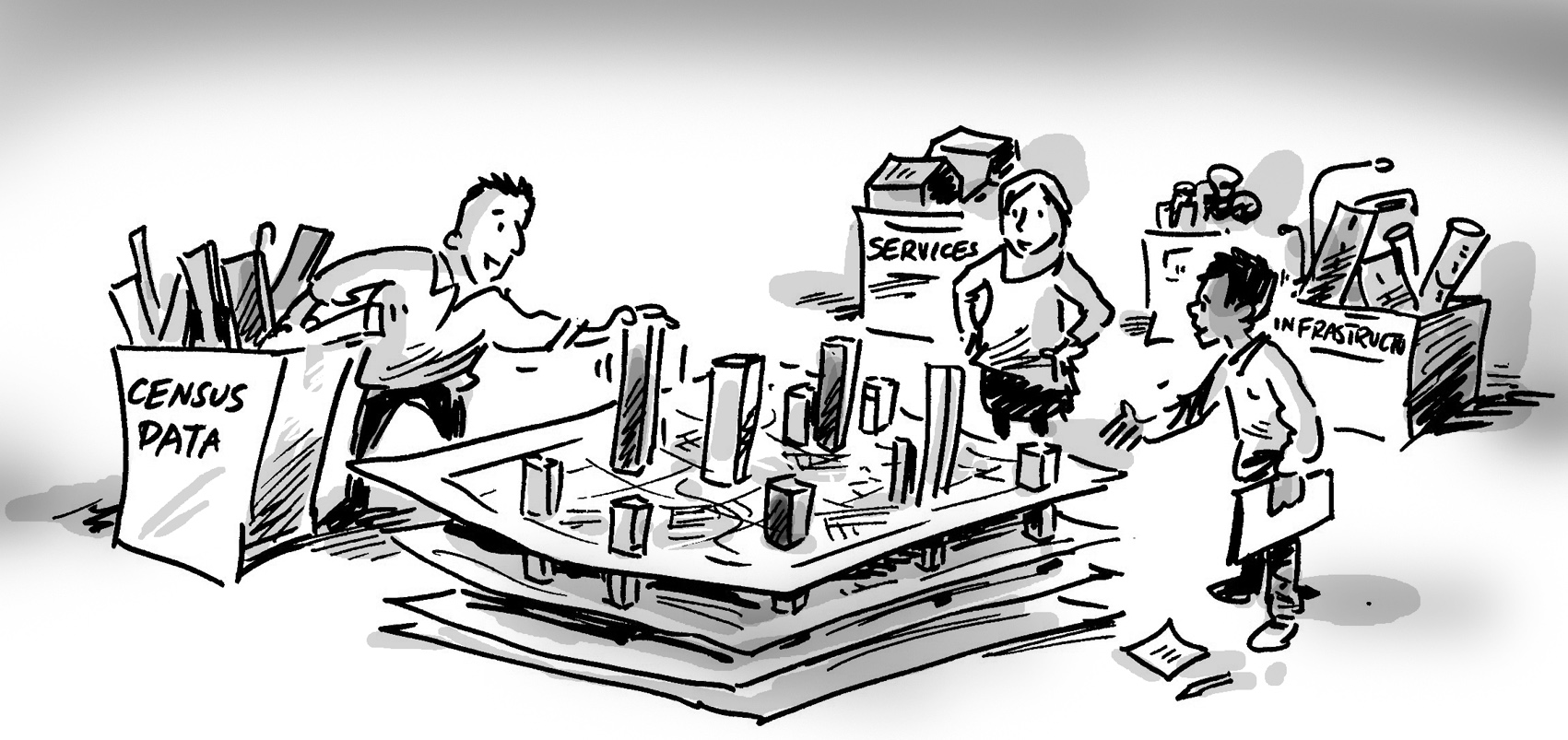BLOG
Bushfire preparedness with demographics
Bushfire preparedness with demographics
Local Governments play a key role in protecting and preparing their local communities when it comes to bushfires and other natural disasters. In this blog, Nenad demonstrates some of the ways we at .id work with our Local Government partners to support them in preparing for times of crisis.
In January, we reached out to some of you in Local Government to offer help with any information you may need for planning and recovery purposes. We are again extending our expertise and assistance in an attempt to empower our local government clients and partners, by doing what we do best – understanding people and communities. We have recently provided free tutorials on how to use Social Atlas to identify vulnerable communities for emergency management planning purposes and to understand the different needs communities within your LGA have – in terms of evacuation, communication and preparedness awareness. If you’re interested in one of these tutorials, please feel free to organise a short training session with me.
It almost feels as if the bushfire season of early 2020 happened two or more years ago. Everything pre-March 2020 fell into the shadow of COVID-19 but it’s important to remember not only that the devastating bushfires across Victoria and New South Wales are a recent event. Affected communities are still recovering – and another bushfire season is here.
Demographic information improves emergency management
In preparing for an emergency such as a bushfire, understanding the demographic and socioeconomic makeup of a place can be as important as knowing which alternative roads to use or what kind of prevailing winds are expected during a fire event. Some areas will be more resilient than others, some areas will be composed of a more vulnerable/at-risk population than others and some areas will require different communication and broadcasting methods to receive messages and instructions and act quickly.
When talking emergency management plans or similar, one of the first places we go is the Social Atlas (atlas.id) tool.
The Social Atlas maps key demographics spatially down to a small geographic level. We have Social Atlases in both Australia and New Zealand. (Our New Zealand Social Atlas clients recently had the much-awaited 2018 Census data added, which is great for accurate planning and demographic analysis.)
While the Social Atlas tool has more than 100 different demographic and socioeconomic datasets for each local government areas, not all of these are applicable or meaningful in emergency management. Below is a list of Social Atlas datasets which are particularly useful in emergency management planning.
| Dataset | Purpose in emergency management |
|---|---|
| Population Density | Visualise highly populated areas or remote pockets of populated areas. |
| Older residents (85+ years) | Identify areas with a high proportion of residents aged 85+. Valuable information if special evacuation plans need to be put in place. Also a useful way of identifying areas where aged care homes/retirement homes are and what their indicative capacities are. |
| Older lone person households | Identify areas with a high proportion of households occupied by lone, older persons. Invaluable in evacuation and preparedness planning and could be useful in establishing community resilience. |
| Recent arrivals | Recent arrivals to a community may not be familiar with the risks of emergencies such as bushfires or other local knowledge regarding evacuation plans. Understanding where you may have a higher population of recent arrivals can guide communication strategies and awareness building. |
| Residents not fluent in English | Communication prior to and during emergencies is vital. Ensuring that official messages get across to all residents helps ensure a coordinated and successful preparedness and evacuation plan. At times, communicating in languages other than English is part of that planning success. |
| Residents needing assistance due to disability | As with older residents, knowing where people who need assistance in their day to day lives because of a disability ensures that evacuation and resource allocation strategies account for areas where more vulnerable populations need extra assistance. |
| Poor internet connection | Although the internet is never the primary nor sole method of communicating with residents – understanding where internet connectivity is poor is important for planning stages of emergency management and can be used to inform the need for alternative broadcasting methods. Areas where internet connectivity is poor may also be an area where cellphone coverage is inadequate. Note that this data will be dropped from the next Australian Census. |
| Households without a car | From an evacuation and resilience perspective, especially in remote areas, having access to a motor vehicle is important. Where do people who live in households without a car live? Would they be in danger during an emergency situation and how can risk associated with evacuation be minimised? |
Useful Social Atlas functionality
There are several techniques and functionalities of Social Atlas which enable users to obtain and understand information and then export and share those findings in plans, reports or other means of communication.
- Export maps – for use in presentations, reports, etc.
- Export data for entire LGA – for any of the 100+ datasets. Useful for people who want to use the data in third-party software such as geographic information systems, dashboards and interactive tools.
- Catchment creation – by selecting relevant geographic areas such as a community or corridor/area which might be at risk of fire. Data specific to the catchment (selected areas) can be exported.
Limitations and constraints
The Social Atlas is a useful tool with multiple applications, but there are some limitations when using the tool in preparing for emergency events. While our New Zealand users have access to the recently released 2018 Census data, the current Australian data is from 2016 while we await next year’s new Census. Many demographic characteristics do not change much over a five year period (such as age/household make up, population density or some diversity characteristics) but some, such as “internet connections”, may change drastically. Connecting to the internet in 2016 most commonly meant a household connection to the internet and having devices connect to that household internet source, whereas in 2020 many households may not have a “household connection” but their occupants will still have access to the internet via because their mobile devices. The ABS has decided to remove this question from the upcoming Census altogether but we will endeavour to find this information elsewhere.
Another limitation of using this data in emergency management is in areas where a significant change to the population may have occurred since 2016 as a result of a disaster. For example, any communities affected by bushfires in late 2019/early 2020 are likely to not be accurately represented in Social Atlas statistics. As many experts involved in emergency management already know, desktop information is important but “ground-truthing”, site visits and access to more recent data such as council occupancy or demolition certificates at the address level – and any other data indicative of current settlement patterns – is key to successful and accurate emergency management.
Advanced emergency management analysis
.id has expertise in providing demographic information and conducting sophisticated spatial and demographic analysis for emergency management purposes. The Social Atlas tool is part of a wider set of services. Some of our partners need more in-depth or specialised information, or they’d like some additional spatial analysis done to enhance their emergency management capability. See this case study for an example. Following are some of the analysis techniques and services we have created in consultation with Local Governments.
- Catchment creation/analysis – using isochrones/road network catchment analysis and demographic analysis of population within catchments.
- Specialised combinations of data – (e.g. older lone persons with no access to the internet or older lone persons with no motor vehicle).
- Identification and analysis of high-risk communities – change over time, likely forecasted growth, etc.
- Creating large, high-resolution maps – for use in civil defence/emergency management HQ.
- Assessment of cumulative vulnerability – combinations of multiple demographic/socioeconomic factors to show areas within a community most vulnerable to identified risk factors. Click this link for an interactive example of how demographics information can be used in emergency management risk assessment in Regional Victoria.
Familiarise yourself with Social Atlas
Converting data into knowledge is .id’s core mission. Whether our policymaker partners are planning for the long-term or addressing immediate needs, we pride ourselves on being here to help. So if you, or someone’s your organisation is involved in emergency management, we encourage you to explore your council area’s Social Atlas tool and if you’d like to book a demo of how you can use this tool in emergency management and to talk to us about anything else we could help with, please contact me on nenad@id.com.au or use this link to easily book a 30-minute presentation.
Nenad - demographic consultant
Nenad’s background is in geosciences and geographic information systems. At .id, Nenad has experience as both as a demographer and population forecaster. His areas of expertise are place-based analysis, identifying spatial patterns in demographic trends, community profiling, catchment analysis and an understanding of role and function of different communities.











